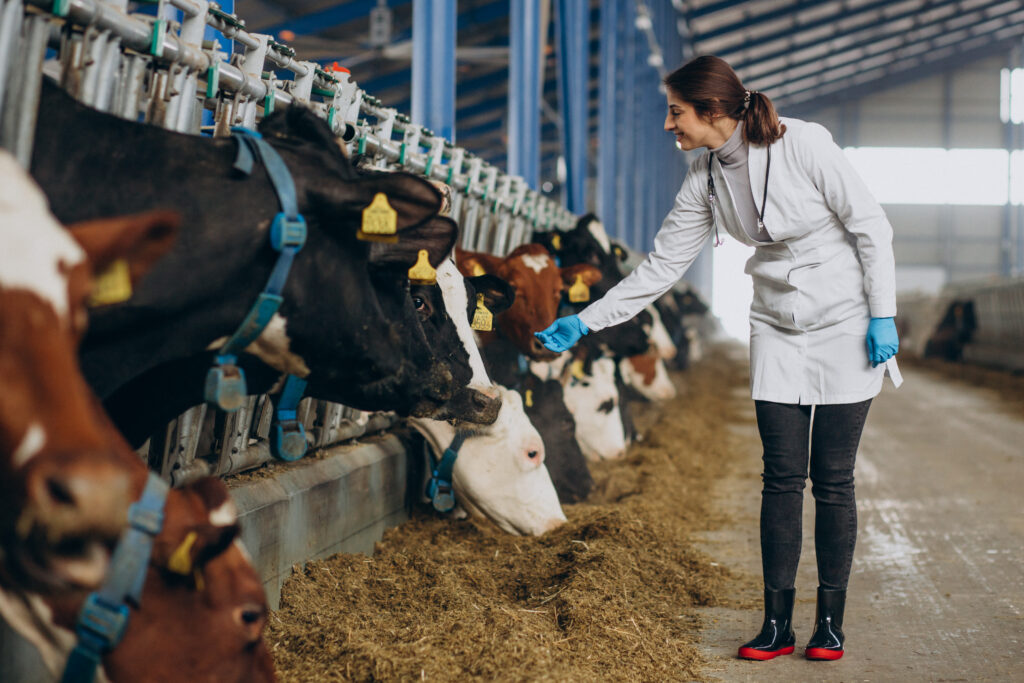ANIMAL WASTE TO BIOGAS
In a world grappling with environmental issues and a growing demand for sustainable energy sources, the conversion of food waste to biogas has emerged as a remarkable solution. This eco-friendly process not only helps manage waste but also generates renewable energy, reducing greenhouse gas emissions. Among the various sources of food waste, cattle and poultry waste have proven to be valuable inputs for biogas production. In this article, we will explore how cattle and poultry waste can be effectively utilized in the creation of biogas while focusing on the keywords “food waste to biogas.”

Cattle Waste: A Rich Source of Biogas
Cattle farming produces a significant amount of organic waste, including manure and bedding materials. When left untreated, this waste can contribute to water pollution and emit harmful gases into the atmosphere. However, by implementing biogas production, we can turn this problem into an opportunity.
- Biogas Production Process: Cattle waste, which mainly consists of manure, is rich in organic matter. This organic matter is an ideal substrate for anaerobic digestion, a process in which microorganisms break down the waste in the absence of oxygen. During this process, biogas, primarily methane (CH4), is produced as a byproduct.
- Energy Generation: The methane-rich biogas produced from cattle waste can be utilized as a renewable energy source. It can be used for heating, electricity generation, or as a clean fuel for vehicles. This not only reduces the reliance on fossil fuels but also mitigates methane emissions from untreated waste.
Poultry Waste: A Compact and Efficient Solution
Poultry farming, with its large-scale operations, generates substantial amounts of organic waste in the form of litter, feathers, and manure. Proper management of poultry waste is crucial to prevent environmental pollution, and biogas offers a sustainable approach.
- Biogas Potential: Poultry waste contains high levels of nitrogen and phosphorus, making it an excellent substrate for biogas production. When processed through anaerobic digestion, poultry waste releases methane, which can be captured and used as an energy source.
- Environmental Benefits: Biogas production from poultry waste not only provides an energy source but also reduces the environmental impact of poultry farming. By converting waste into biogas, the emission of harmful gases and the risk of groundwater contamination are significantly reduced.
Challenges and Considerations
While converting cattle and poultry waste into biogas is a promising solution, it comes with its own set of challenges:
- Feedstock Availability: The availability of waste materials may vary seasonally and regionally, making it important to establish a consistent supply chain.
- Technology and Infrastructure: Adequate infrastructure and technology are required for efficient biogas production. This includes digesters, gas collection systems, and knowledge on biogas system operation.
- Economic Viability: The economics of biogas production from cattle and poultry waste depend on factors such as energy prices, government incentives, and initial investment costs.
Conclusion
The transformation of cattle and poultry waste into biogas is a sustainable and eco-friendly solution that addresses two pressing issues: waste management and renewable energy generation. By implementing biogas production systems, we not only reduce the environmental impact of food waste but also harness a valuable source of clean energy. The keywords “food waste to biogas” signify a brighter, more sustainable future where waste is no longer a problem but a resource waiting to be utilized. It’s time to tap into the potential of cattle and poultry waste to create a greener world for all.
AKSHAYANIDHI
Panchsheel Enclave, 11, Jawahar Lal Nehru Marg, near Hotel Clark’s Amer, Jaipur, 302018
